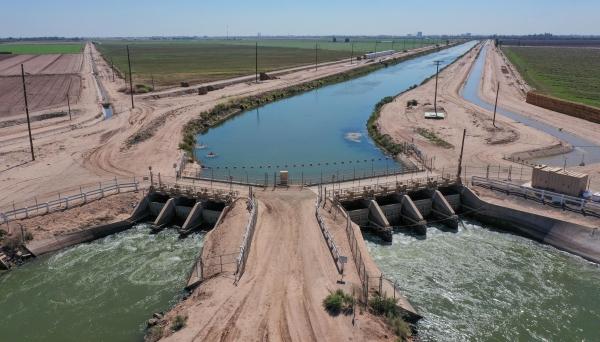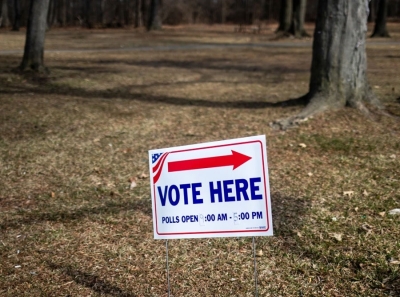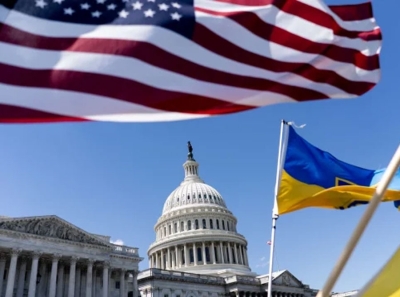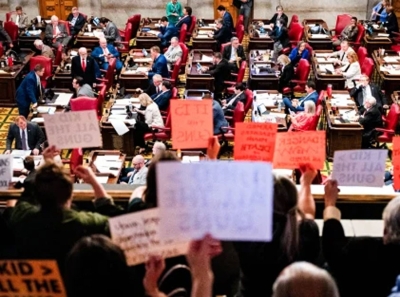John Brooks Hamby was 9 years old the last time a group of Western states renegotiated how they share the dwindling Colorado River. When the high-stakes talks concluded two years later, in 2007, with a round of painful cuts, he hadn’t reached high school.
Yet this June an audience of water policy experts listened with rapt attention as Hamby, now 27, recited lessons from those deliberations.
Hamby, California’s boyish-looking representative on issues concerning the river, sat shoulder-to-shoulder with the other states’ powerful water managers, many of whom have decades of experience, an almost uncomfortable sight given their latest brawl over the beleaguered Colorado River. The group had gathered in a mock courtroom at the University of Colorado Law School to discuss water law and to field questions about their negotiations over shortages that have prompted some cities to restrict growth and farmers to fallow fields.
The moderator asked whether states would allow Native American tribes in the basin, who have often been denied the water they were guaranteed by treaties and court rulings, to have an equal say in these decisions, referencing a question posed earlier by the governor of the Gila River Indian Community, a tribe in Arizona. Hamby jumped to offer a noncommittal answer about involving tribes in “effective conversations” before pivoting to a discussion of how, during the 2007 negotiations, smaller working groups had allowed the states and other water users to effectively iron out potential impasses.
The only other state delegate to respond endorsed Hamby’s answer, a sign of how quickly he has risen to the top of the river’s ranks. Hamby — who goes by J.B. — is the youngest of the Colorado River’s “water buffaloes,” as the water managers who set policy are known.
While his counterparts from the other basin states — Arizona, Colorado, Nevada, New Mexico, Utah and Wyoming — worked their way through water agencies or weathered the shifting politics of various governors, Hamby’s ascent was swift. In a three-year span, he rose from a recent Stanford University graduate, with a resume that touted little beyond a history degree and internships with Uber and a senator, to vice president of the Imperial Irrigation District board and chair of the Colorado River Board of California. The former post gave him sway over the single largest user of Colorado River water, and the latter made him California’s interstate negotiator for issues affecting the river basin.
Combined, these roles position Hamby as arguably the most powerful person involved in talks on the future of the Colorado River, a waterway that is relied upon by an estimated 35 million people and supports about $1.4 trillion worth of commerce.
They also place him at the center of the river’s most consequential moment since midcentury, when Arizona and California went to the Supreme Court to fight over the amount of water they were allocated. Now the river’s users must agree to dramatic cuts, as the river has been diminished by climate change and drought. It’s a task that demands Hamby both protect California’s long-standing water rights and lead all seven basin states to collaborate on a resolution, even though they’ll all have to give ground.
Hamby holds the trump card. The Law of the River — the compacts, laws and court rulings that govern how the river is allocated — reflects a time when water use was encouraged to bring settlers west. And court decisions have favored users with senior priority rights, meaning those who were first to plant stakes along the river, file claims in county recorders’ offices and prove their claims by taking water before federal and state water laws were codified. Those with such rights are legally entitled to receive their share of the river before the next person or agency in line receives any. The Imperial Irrigation District holds some of the basin’s oldest rights, dating back to 1901.
Hamby defends this system, which allows the Imperial Valley — home to only half of a percent of the river’s users, Hamby included — to control about a quarter of the river’s flow. That’s more than 10 times southern Nevada’s allocation and more than the entire state of Arizona receives. A recent ProPublica and Desert Sun analysis found that 20 valley farming families use about 387 billion gallons of cheap water annually, most of it to grow cattle feed, and one family uses more water than the entire Las Vegas metropolitan area.
Even so, Hamby can only go so far in dictating the terms of basinwide cuts. Strictly adhering to the century-old status quo would be catastrophic, as it would continue decades of overuse and could cut off the supply to millions of people in lower-priority cities and reservations. But if Hamby concedes too much to the other states, he risks costing California by upending the historical agreements that put the Golden State at the front of the line.
As an IID director, he must protect the priority system preferred by farmers who use most of the river and fear the cities eyeing their share. As California’s negotiator, he also represents cities like Los Angeles and San Diego as well as oft-overlooked tribes.
“Water is power. Water is control. So why would anyone want to give that up, to give it away to somebody else?” said Kyle Roerink, a Nevada environmentalist who runs the Great Basin Water Network and has joined unlikely coalitions with Hamby fighting the region’s seemingly endless urban growth.
If the basin states can’t find agreement, then the Law of the River reigns supreme, Hamby told ProPublica and The Desert Sun earlier this year. “That is the law, which everybody agreed to.” California is ready to compromise on cuts, he added, “but we need to see something come from the other states.”
An Origin Story

Hamby grew up among the hot Imperial Valley farms and picked up the region’s “us against the world” mentality that flourishes alongside alfalfa, livestock and leafy greens. In California, dreams only go as far as water allows, and the valley’s farmers live in constant fear that cities are lusting after the water that sustains the local economy.
In the Imperial Valley, locals’ bona fides rest on how many generations back their family arrived in this hardscrabble desert. Hamby’s great-grandfather “came here with $10 in his pocket on the back of a freight train from Big Spring, Texas,” as Hamby tells it, and worked as a ditch digger before starting a beekeeping business. His family has remained in the agriculture industry.
Hamby’s father has held various gigs, from helping develop a farm in China (to the dismay of some Imperial Valley growers) to his current business growing seeds. And his mother worked on water issues from a different angle, serving as a county environmental health specialist, including focusing on the pollution that flowed through the valley via the New River.
If his family had a successful farm to pass on, Hamby, who was active in 4-H as a teenager, said he would’ve embraced that career path. “There’s been repeated struggle, and dreams will be built up and dashed and broken,” Hamby said of his family history. Instead, he looked for other ways to shape the valley.

Despite his agrarian upbringing, he had an origin story to launch him into conservative politics, if only he wanted that path.
In 2014, Hamby was to give a speech at his graduation as the salutatorian of his Brawley Union High School class. But he had chosen to write an address about his Christian faith, to which school administrators objected, he said, forcing the teenager to rewrite it multiple times.
At the ceremony, he stepped to the lectern, the hot desert wind jostling his tassel and waving a line of American flags at his back. “Congratulations, class of 2014,” Hamby concluded, his words echoing over the sound system. “Thank you, and may the God of the Bible bless you, each and every one of you, every day of the rest of your life.”
The crowd cheered. Right-wing outlets including Fox News featured stories of a student standing up to what they saw as censors, dubbing him a “red-blooded, Constitution-loving American.” He was interviewed on national television about his stand for Christian religious liberty.
But something kept pulling Hamby toward battles grounded less in identity politics and more in the day to day. Exactly how he came to combine water and politics wasn’t entirely clear to him as he sat in a Mexican restaurant in the Imperial Valley town of El Centro earlier this year.
Asked if the fight over his graduation speech was the beginning of his story in politics, he pushed back. “Lives are very complicated and long,” he offered.
Finding a Cause
Even if he saw himself becoming a farmer, political ambition has propelled Hamby his entire life.
His mother told a local reporter that he had wanted to be mayor at 5 years old. At 17, he earned a three-week posting as a page for Sen. Barbara Boxer, a California Democrat. In college, he interned for Sen. Ben Sasse, a Nebraska Republican. In 2019, he was appointed by the county board of supervisors to a local community advisory council.
Hamby, who said he’s registered to vote without a party preference, continuously sought out bigger causes.
While in college, Hamby was involved with political groups, including, among others, the Stanford College Republicans and an anti-abortion organization. As he waded into the university’s archives, it became clearer where he wanted to focus his ambitions.
Hamby voraciously read about the West’s battles over water, marveling at the papers of Northcutt Ely, a storied water attorney who argued the Supreme Court case Arizona v. California on the latter’s behalf, and Ray Lyman Wilbur, a former secretary of the interior who oversaw construction of the Hoover Dam.
Asked how he felt living in the archives while some of his college compatriots partied, Hamby quipped, “Well, you could only be in the archives in the daytime. There were other opportunities in the nighttime, which I did not exploit.”
Roerink, the environmentalist, compared Hamby to the historical figures he studied who fought to protect the system that has guaranteed California’s water. “Northcutt Ely and J.B. are saying a lot of the same things, that development elsewhere ultimately impacts the rights of California,” he said.
In a Facebook post celebrating his graduation from Stanford, Hamby included a picture of himself smiling, diploma in hand, alongside a quote from John Wesley Powell, the one-armed explorer who led the first U.S.-sponsored expedition down the Colorado River and tried to help shape early American policy along the waterway, arguing that there wasn’t enough water to support mass Western expansion.
“We are now ready to start on our way down the Great Unknown,” Hamby quoted from Powell’s musings on the river. “Our boats, tied to a common stake, are chafing each other, as they are tossed by the fretful river.”
Four months later, Hamby announced his candidacy for the Imperial Irrigation District’s board of directors.
Southern California’s Big Red Brexit Bus
In an ad for the 2020 race, Hamby stares into the camera and shakes his fist. “Imperial Valley’s water belongs to all of us, and it belongs here,” he says. Big cities are trying to take the valley’s water and other water managers will allow that via “backroom political deals,” Hamby says in the video. But he would protect the precious resource if elected.
Hamby’s message struck a chord.
He had studied recent successful political movements: populist Mexican President Andrés Manuel López Obrador’s election, the Labour Party’s landslide 1997 win in Great Britain and the conservative pro-Brexit campaign in 2016.
He was particularly inspired by the notorious big red bus that toured the United Kingdom, spreading the message that the country was spending huge sums to prop up the European Union — a persuasive argument that was a lie. He also took note of environmentalists using a giant mobile bucket to protest an attempt to move water from rural Nevada to Las Vegas. Hamby rented a flatbed, mounted a massive pipe on the back and had it driven around the Imperial Valley. The insinuation: This is how San Diego will buy and siphon off your water.
“People immediately got it, especially when you had a 30-, 40-foot pipe marauding around the area,” Hamby said.
He vowed to hold a public referendum before any more Colorado River water was moved out of the valley. Hamby later led the charge to secure $250 million in federal funds if the irrigation district temporarily cut its use of river water, despite an outcry from farmers and environmental groups who only had 24 hours to review the plan before the board voted on it. No referendum has been held.
Asked if he had broken his campaign promise, Hamby said that he is working to enshrine public input in district policy and that “we’re not moving water to any other places. We’re maintaining it in the system to be able to protect our sole source and supply.”
He also made stylistic changes as he entered the political arena. He started going by J.B. because it sounds more “iconic,” he told a podcaster, and because potential voters were getting confused by the name Brooks, he told ProPublica and The Desert Sun. And he refined his look. He’s clean-shaven and sports a high and tight haircut. His wardrobe could be described as “corporate outing meets Western wear,” often including a turquoise bolo tie and the IID crest, which features a crown adorning a shield, pinned to his lapel.
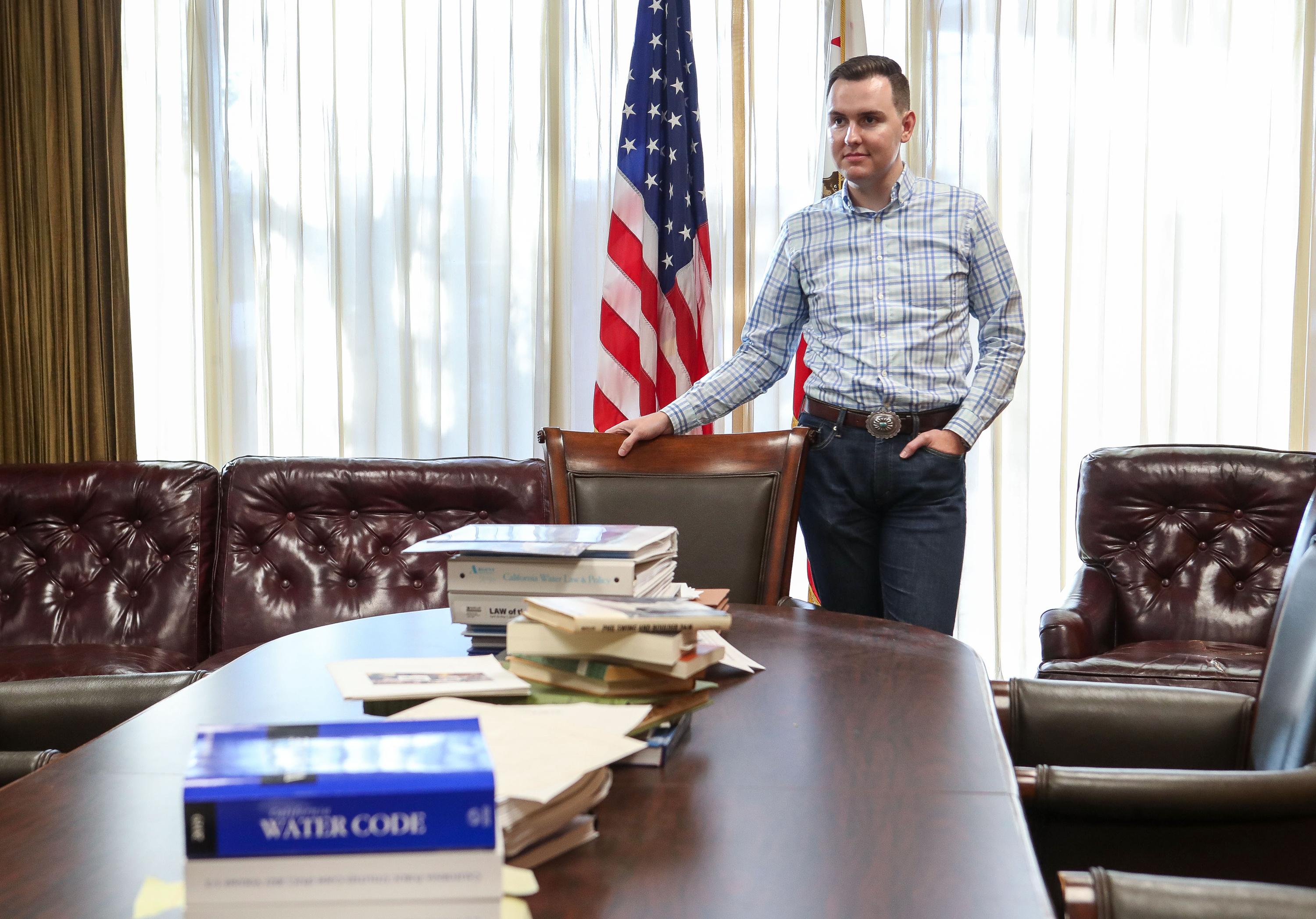
During his campaign, Hamby faced questions about his inexperience and choice to run in a district other than the one where he was raised. “JB is still a KID. JB needs a JOB. DON’T give him your VOTE. IID DIRECTOR should not be one’s first JOB out of college,” one constituent commented online, according to the Imperial Valley Press, a local newspaper that covered the race.
Still, Hamby was the top vote-getter in the primary, beating an incumbent who cast the deciding vote on a controversial 2003 agreement that transferred a portion of the valley’s water to cities to help get California back within its allotment. Many of the valley’s large, wealthy farming families supported Hamby’s campaign, which brought in more than $100,000, including loans from his father’s company.
Hamby garnered nearly two-thirds of the general election vote. He had a mandate to defend the valley’s water rights.
Hamby’s time on the board got off to a combative start. While waiting to be seated, he showed up at board meetings, publicly calling on members to avoid making important decisions until the new members were seated. He and another newly elected director skipped the district’s official swearing-in and held their own due to a disagreement over who could attend amid COVID-19 restrictions.
When the outgoing board signed a sweeping project labor agreement with Southern California unions days before Hamby took office, he engineered a strategy to rip it up by declaring that the motion to approve it was ambiguous and voting to nullify it. That move led to litigation, which was resolved when the district accepted a modified agreement.
Over time, as he confronted problems that would take collaboration to solve, Hamby’s tone changed. The board, which has a history of dysfunction, confronted issues ranging from mandatory water conservation that is shrinking the Salton Sea — a terminal lake fed by irrigation runoff that is now exposing communities to toxic dust as water levels fall and uncover the lakebed — to a powerful farmer who has been battling in court to break the irrigation district’s control over water.
Many of Hamby’s colleagues, including fellow Director Javier Gonzalez, praised the young director’s leadership. “He’s a hard worker,” Gonzalez said. “He gets things done.”
The rewards of the job are less financial and more the ability to pursue policy goals. The irrigation district’s directors make around $50,000 annually. Hamby drives an aging Toyota Prius and says he lives in a “bachelor apartment.” But even with his work ethic, there were limits to how much Hamby could deliver on his campaign promises to keep the district’s water in the Imperial Valley.
To do that, he needed to be at the table with the basin’s water buffaloes.
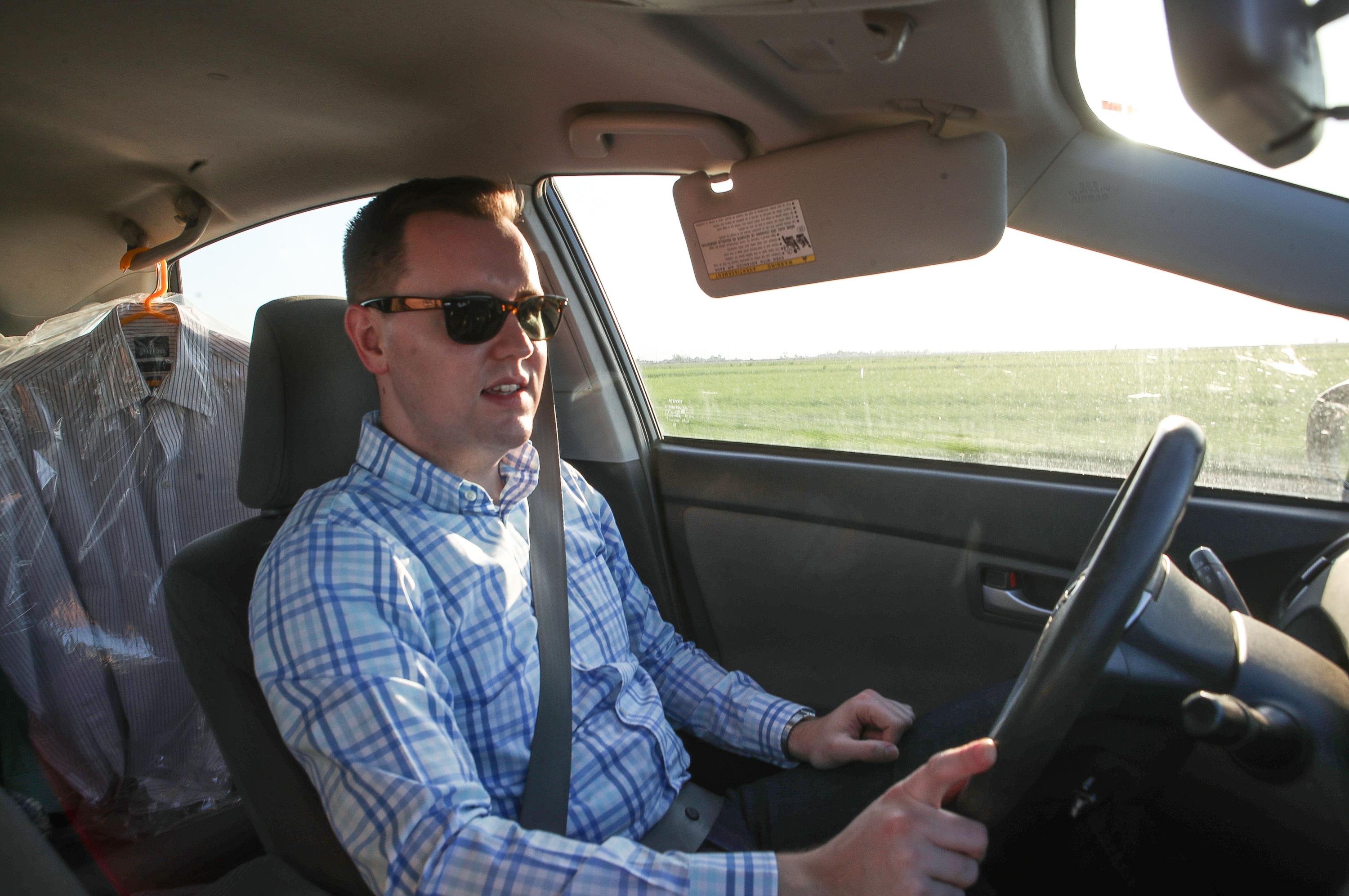
At the Head of the Table
Power in the Colorado River Basin lies largely with the seven states and their designated representatives now haggling over cuts to water allocations.
The Colorado River Board of California is the state’s representative. Gov. Gavin Newsom appointed Hamby to the board a few months after he was sworn in at the irrigation district.
Less than two years later, the chair, who acts as the state’s negotiator, unexpectedly announced he wouldn’t seek reelection.
The board is split between representatives of rural water districts that largely serve farmers and urban water districts serving Los Angeles, San Diego and other cities. A member of the San Diego County Water Authority board emerged as the cities’ candidate for chair, with Hamby as the preference of the rural irrigation districts. Neither candidate had enough votes to win, and some of Hamby’s earlier brash remarks left an older water manager feeling uneasy about voting for him.
Glen Peterson, who was then the board’s representative from the Metropolitan Water District of Southern California, which serves 19 million people, was considering supporting Hamby but “had concerns” about his public statements. After a frank conversation between the two and some maneuvering with other board members, the votes shifted.
“I think he’s a wonderful kid. And he’s really smart and, for his age, he is extremely mature,” Peterson said. “I mean, this guy probably sat at the big people’s table when he was a teenager.”
Hamby was elected the new chair, overseeing California’s negotiations with the rest of the basin states.
“Traditionally, it’s been, ‘You hold the role and then you die in it,’” Hamby explained. “IID’s had three people hold the position before. The previous three died in the role.” (The chair of the board now serves four-year terms, but there is no limit on the number of terms.)
When asked what happens next on the river, where he would’ve once brought rhetorical fire and brimstone, he now offers coded responses. “I need to develop truly consensus-based approaches to develop a new set of operating guidelines and standards that everybody can agree on, because there’s necessity,” he said.
Charting the River’s Future
With aggressive conservation efforts already underway in some parts of the Colorado River Basin, policymakers are realizing that ripping out lawns and installing low-flow toilets in metropolitan areas won’t be enough to save the river. Agriculture uses an estimated three-quarters or more of the river, meaning any solution must include cuts to farmers’ allocations and a rethinking of the long-protected priority system.
That puts IID and California, with their senior water rights, at odds with the rest of the basin.
In January 2023, facing a federal deadline to come up with a plan to cut water use, the other six basin states released a joint letter detailing their idea to conserve water. California, which potentially faced the heaviest cuts, was the only state not to sign onto the plan.
“Compromise really wasn’t in the air at the time,” Hamby said.
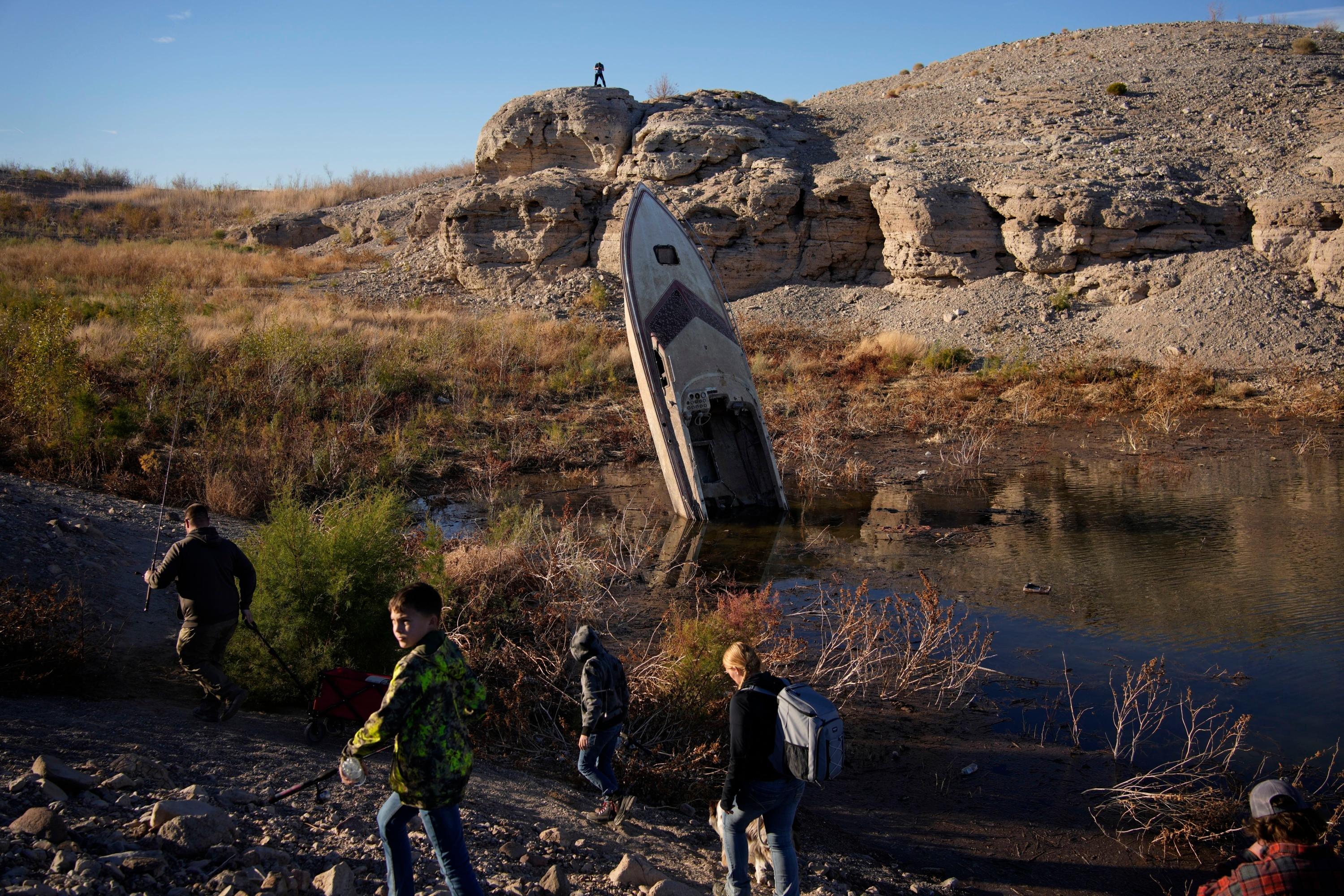
A day later, the Colorado River Board of California, with Hamby at the helm, rushed to release its own plan. The board flexed California’s water rights, arguing in a statement that the other states’ proposal “conflicts with the existing Law of the River” and undermines the priority system.
In the ensuing weeks, Hamby made it known that the other states’ methodology for saving water, which put California at a disadvantage, was untenable.
“That moment looked like the example of him digging in his heels,” said Elizabeth Koebele, an associate professor of political science at the University of Nevada, Reno who studies the river’s governance. She added, “We did see the power of California and the role that their legal position plays on the river.”
But unless Hamby were willing to exercise the nuclear option and test the strength of California’s legal position in court, he’d have to give up something to protect water rights in the state.
He embraced diplomacy, writing thank-you notes to other states’ representatives and beginning to broker a new plan among the Lower Basin states: California, Arizona and Nevada. In it, they agreed to apportion short-term cuts — importantly, without changing the priority system or water accounting in the long run — until a new set of rules and agreements could be hammered out. That new plan is due by the end of 2026.
“There’s still certainly an argument that he’s making that’s based on protecting as much Colorado River agricultural water as possible, but there’s this shift that’s happening,” Koebele said, adding that Hamby and California seem to be embracing a “realization that simply arguing ‘Our water rights are senior’ is not going to save agriculture.”
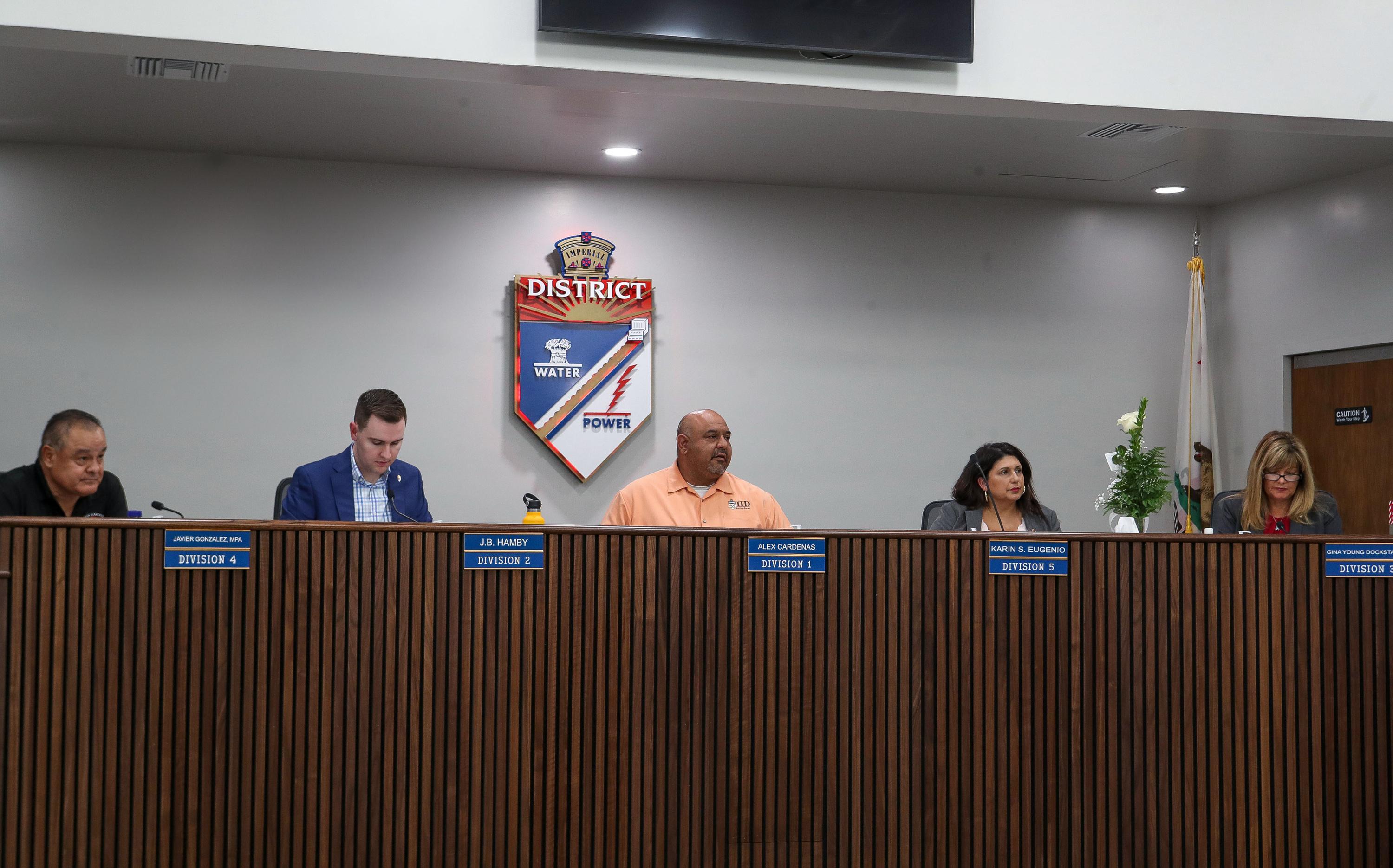
Other water leaders, both in California and around the basin, have acknowledged Hamby’s diplomatic approach. Even Arizona, which has traditionally been California’s staunchest rival on the river, took notice.
“J.B. has exhibited a real progressive, collaborative spirit in our discussions,” Tom Buschatzke, the director of the Arizona Department of Water Resources and the state’s representative, wrote in an email. “He is a very measured, calm person who is clearly very intelligent.”
Hamby acknowledged he’s evolved on the job from “a very eager young 23-year-old” to someone more focused on compromise as his position in river negotiations grew.
But a temporary harmony along the river isn’t a guarantee he’ll remain in good standing with voters in the Imperial Valley. Even as he’s working with colleagues across the basin, Hamby still must contend with local politics and strike a balance between finding agreement with the other basin states and protecting the favorable status quo.
Some of the valley’s farmers have privately voiced dissatisfaction with Hamby and the district, and one former local politician said he was asked to consider challenging Hamby in next year’s election.
Hamby also received a cryptic death threat in the mail earlier this year, in which the sender, allegedly frustrated with the handling of the Colorado River, suggested he be shot.
But he shrugged off that incident too as just someone sending him “a nice notecard.” All paths forward on the river go through Hamby, and there were more pressing water policy questions — and potential solutions to the river’s woes — that he wanted to discuss instead.
“I’ve been accused of being optimistic,” he said.
Mollie Simon contributed research.

